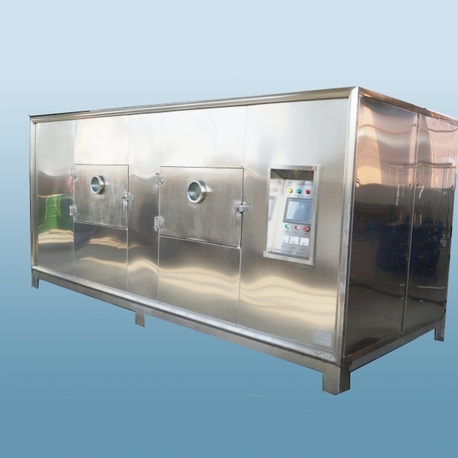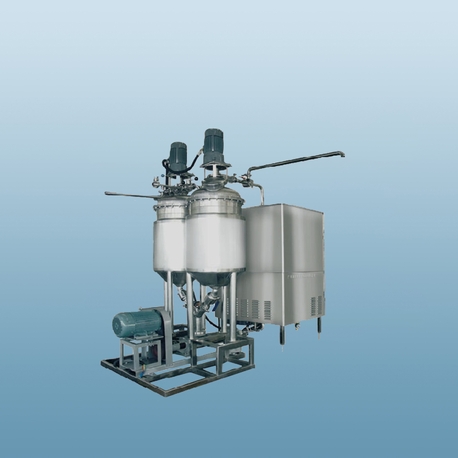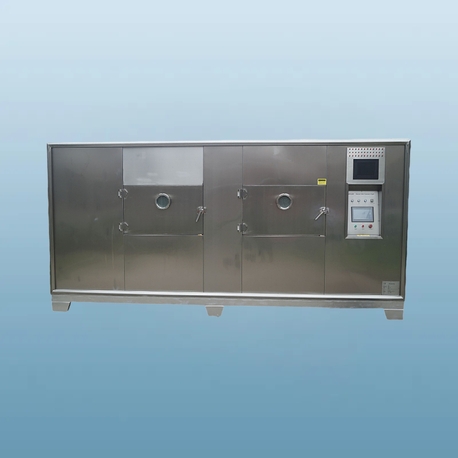If your business deals with bulk materials that need consistent, large-scale drying, you’ve likely encountered the term tunnel dryer. This workhorse of industrial dehydration is a cornerstone of efficiency for many sectors. But what exactly sets it apart, and is it the right solution for your operation? This article breaks down the five key advantages of using a tunnel dryer, explains its operation, and highlights the industries that rely on it. We'll also explore how a manufacturer like Nasan can provide a tailored continuous drying system to meet specific production goals.
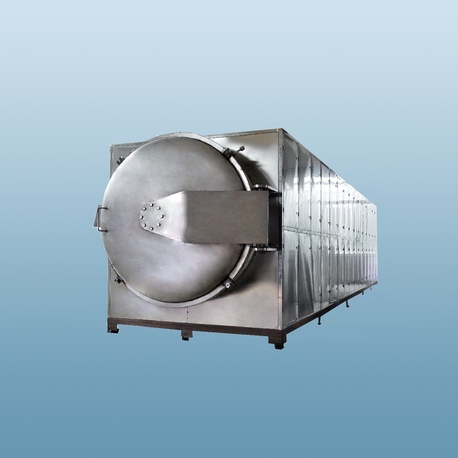
What is a Tunnel Dryer? A Primer on Continuous Flow Drying
A tunnel dryer, also known as a conveyor dryer, is a type of industrial drying machine designed for high-volume, continuous processing. Unlike batch dryers, which process a finite amount of material at a time, a tunnel dryer operates on a continuous flow principle. Products are loaded onto trays or a conveyor belt at one end, travel through a long, insulated "tunnel" where controlled heat and airflow remove moisture, and emerge dried at the other end. This design is fundamental to modern assembly lines where uninterrupted production is critical.
The Inner Workings: How a Tunnel Dryer Operates
Understanding the process demystifies why the tunnel dryer is so effective. The operation can be visualized in a clear, sequential flow:
Loading Zone: Raw, wet product is evenly distributed on trays or directly onto a continuous conveyor belt.
Pre-Drying Section: As the product enters the tunnel, it is often exposed to moderate temperatures to begin surface moisture removal without causing case-hardening (where the outside hardens and traps moisture inside).
Main Drying Zones: The conveyor moves the product through several zones where temperature, humidity, and airflow are meticulously controlled. These conditions are tailored to the product's specific thermal properties.
Final Drying/Cooling Zone: Towards the exit, the temperature may be adjusted to ensure the target moisture content is met uniformly. A cooling section often helps stabilize the product before discharge.
Unloading Zone: The consistently dried product is automatically discharged for packaging or the next stage of processing.
This continuous drying process ensures a non-stop workflow, maximizing throughput and minimizing labor costs.
5 Key Advantages of Implementing a Tunnel Dryer System
Why do so many industries choose a tunnel dryer? The benefits are compelling and directly impact the bottom line.
1. Unmatched Throughput and Continuous Operation
The most significant advantage is continuous processing. A tunnel dryer eliminates the downtime associated with loading and unloading batch dryers. This results in a much higher output, making it the only viable option for large-scale production facilities, such as those producing snack foods or dehydrated vegetables.
2. Superior Drying Uniformity and Product Quality
Because the drying conditions in each zone are fixed and controlled, every particle of product experiences the same environment for the same duration. This leads to exceptional uniformity in final moisture content, color, and texture. This consistency is a hallmark of a high-quality industrial drying system and is crucial for brand reputation.
3. Significant Labor and Operational Cost Savings
The high degree of automation in a tunnel dryer drastically reduces the need for manual intervention. Once the system is loaded and running, it requires minimal oversight compared to multiple batch dryers. This translates to lower labor costs and reduced potential for human error.
4. Enhanced Energy Efficiency
Modern tunnel dryer designs incorporate sophisticated heat recovery systems. Exhaust air from later stages, which still contains usable thermal energy, can be redirected to pre-heat incoming air in earlier stages. This recycling of energy significantly reduces fuel or electricity consumption, a critical consideration in today's energy-conscious market.
5. Flexibility and Scalability
While a tunnel dryer is often designed for a specific product range, they are highly configurable. The speed of the conveyor, zone temperatures, and airflow can be adjusted to accommodate different products or moisture requirements. Furthermore, the modular nature of these systems allows for scaling by extending the tunnel length to meet growing production demands.
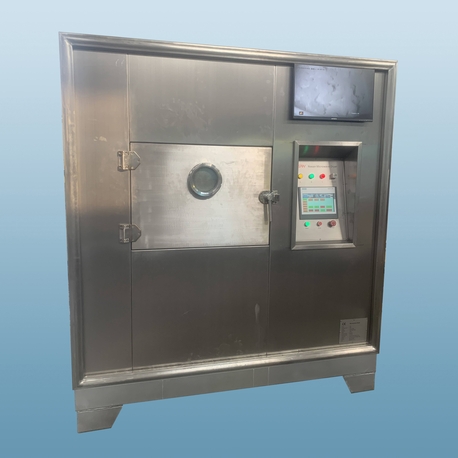
Primary Industries That Rely on Tunnel Dryer Technology
The application of tunnel dryer systems is vast, spanning numerous sectors:
Food Processing: The largest user, ideal for drying fruits, vegetables, herbs, nuts, and pet food. It's also extensively used in the snack industry for potato chips, banana chips, and similar products.
Textile Manufacturing: Used for drying fabrics, yarns, and garments after dyeing or washing, ensuring consistent and shrink-free results.
Ceramics and Building Materials: Essential for drying bricks, tiles, and clay products uniformly to prevent cracking and ensure structural integrity before firing.
Pharmaceuticals: Used in the precise drying of certain granules and herbal ingredients where consistent low moisture levels are mandatory for product stability.
Is a Tunnel Dryer the Right Solution for Your Business?
Choosing the right industrial drying equipment depends on several factors. A tunnel dryer is ideal if:
Your production volume is high and continuous.
Product uniformity is a non-negotiable quality standard.
You are looking to automate your process to reduce labor costs.
Your product is solid and can be conveyed on a belt or trays (e.g., not a liquid slurry).
For lower-volume or more specialized applications, other dryers like batch cabinet dryers or spray dryers might be more appropriate. Consulting with an experienced manufacturer like Nasan is the best way to conduct a thorough needs analysis.
Maintenance Best Practices for Your Tunnel Dryer
To protect your investment and ensure decades of reliable service, a proactive maintenance schedule for your tunnel dryer is essential. Key tasks include:
Regular inspection and lubrication of the conveyor drive system.
Cleaning air intake and exhaust vents to maintain optimal airflow.
Calibrating temperature and humidity sensors annually.
Inspecting and replacing heating elements and insulation as needed.
Following a maintenance plan provided by your supplier, such as the comprehensive guidelines offered by Nasan, will minimize unplanned downtime.
Conclusion: Driving Efficiency with Continuous Drying
In summary, the tunnel dryer remains a dominant force in industrial drying technology for a simple reason: it delivers unparalleled efficiency, consistency, and scalability for high-volume operations. Its continuous process design is perfectly suited to the demands of modern manufacturing. For businesses aiming to optimize their drying phase, investing in a well-engineered tunnel dryer from a reliable provider is a strategic move. Companies like Nasan have built a reputation on designing and manufacturing robust tunnel dryer systems that meet the rigorous demands of diverse industries, ensuring quality and productivity for years to come.
Frequently Asked Questions (FAQ)
Q1: What is the main difference between a tunnel dryer and a flash dryer?
A1: A tunnel dryer is a continuous system best for solid, piece-form products (like vegetable chunks or tiles) that are conveyed on a belt. A flash dryer is designed for powdered or granular materials, using a high-velocity hot air stream to dry and transport the product in a matter of seconds. The choice depends entirely on the product's physical form.
Q2: How long can a tunnel dryer be, and does size impact efficiency?
A2: Tunnel dryer length can vary dramatically from 10 meters to over 50 meters, depending on the required drying time for the product. While longer dryers have a higher capital cost, their efficiency is determined by their heat recovery systems and insulation. A well-designed, longer tunnel dryer can be more energy-efficient than a smaller, less sophisticated model if it properly recaptures and reuses thermal energy.
Q3: Can a tunnel dryer handle temperature-sensitive products?
A3: Yes, this is one of its strengths. The multi-zone control allows operators to set a specific, gentle temperature profile. For instance, a product can start at a low temperature in the first zone to prevent case-hardening and gradually move through slightly warmer zones. This precise control is a key feature of advanced industrial drying systems.
Q4: What are the common heat sources for a tunnel dryer?
A4: Tunnel dryer systems are highly flexible regarding heat sources. Common options include natural gas or propane combustion, steam (via heat exchangers), electricity (for smaller units or specific applications), and even thermal oil. The choice often depends on local utility costs and factory infrastructure.
Q5: We have limited factory space. Is a tunnel dryer still an option?
A5: While tunnel dryer units are long, their footprint is typically linear and can often be designed to fit into existing production lines. Furthermore, some configurations can include multi-pass or elevated designs to reduce the overall floor space required. A knowledgeable engineering partner like Nasan can often design a layout that works within spatial constraints.


